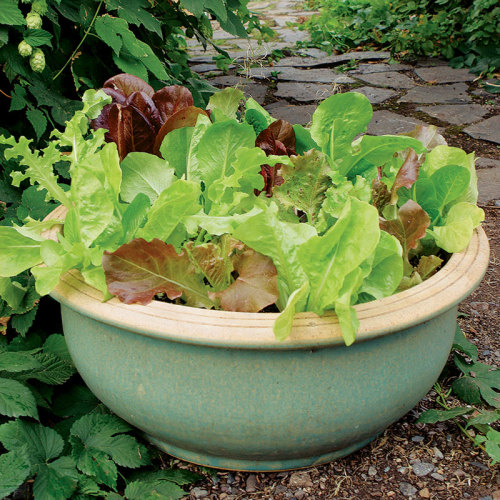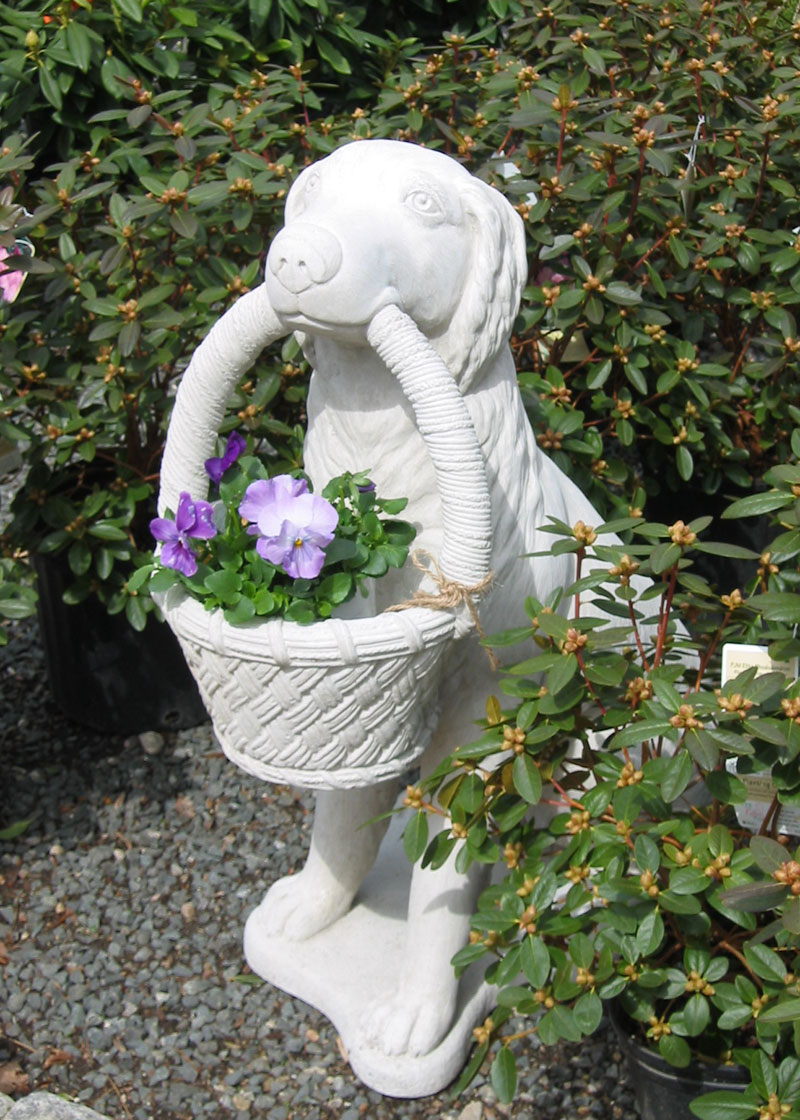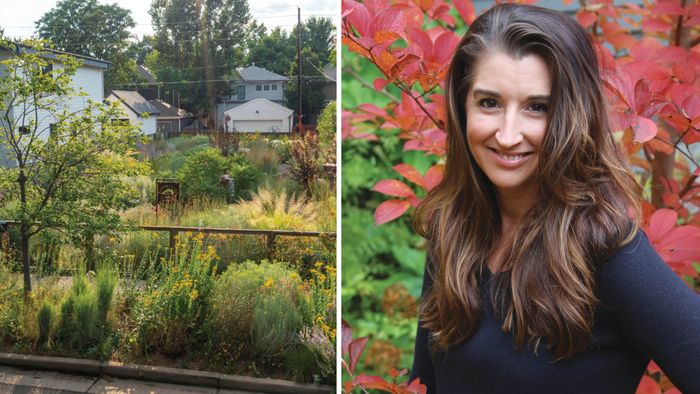
If you have limited space and time but still want to try your hand at growing vegetables, think containers. No yard is necessary; a patio, deck, window box, or even a fire escape will do. All you’ll need is a couple of containers, some soil, seeds or seedlings, and a little fertilizer. Your cash outlay will be minimal, and you’ll have the satisfaction of growing something tasty to eat.
You won’t be alone. According to a 2009 National Gardening Association Survey, about half of all food gardening households (48 percent) grow food in containers. I’ve always been blessed with enough space for an in-ground garden, so I never had to “resort” to growing vegetables in containers, but this year I decided to explore the topic.
 |
|
| Hollandia Nurseries in Bethel, Connecticut, offers gardening seminars every spring. | |
I recently attended a seminar on the topic at Hollandia Nurseries in Bethel, Connecticut, an established family-owned business with gorgeous display gardens and acres of greenhouses with flats of annuals, perennials, and vegetables as far as the eye can see. Owner Eugene Reelick took an hour out of his busy day to explain the basics. Here’s what I learned.
Location, location
Vegetables need 6 to 8 hours of sun per day. For heat-loving plants, a south or southwest exposure is best. To keep lettuces productive in the summer, a southeastern exposure gives them light early in the day and keeps them out of the strong afternoon sun. Of course if your container small enough to carry, you can move from place to place, as necessary.
Choosing a container
 |
|
| Not the best or cheapest choice for growing vegetables, but you could grow them here. | |
Somewhere out there in the marketplace, there’s the perfect container for you in the material, shape, size, and price range you seek. Ceramic, plastic, terra-cotta, wood—the list goes on. You can purchase a container that’s diminutive, or you can get one that requires a forklift to move. You can even get a railing planter with a bottom that’s configured to sit snugly on a 2×4 or 2×6 deck railing. Or you can simply reuse something you already have, such as a whiskey planter, garbage can, joint-compound bucket, baskets, or window box.
Whatever container you use, just make sure that it has drainage holes at or near the bottom and that it’s deep enough for what you want to grow. Lettuces and herbs require the least depth; tomatoes, peppers, eggplant, broccoli, and cukes the most.
Soil selection is critical
A high-quality potting soil is your best bet, and Reelick recommends Hamptons Estate Professional Potting Soil. Another good choice is a commercial soil-less mix. Topsoil alone is too heavy and should be avoided. And it never hurts to add some compost. To retain moisture, Reelick suggests adding some Soil Moist to the bottom of the container to help retain moisture.
Plant from seed or seedlings
 |
|
| Leaf lettuce is a good choice for a container garden. The plants continue to grow as you harvest individual leaves, and if you shelter the container from the heat of the sun, you’ll extend the season into early summer. | |
Either will work. Nearly any vegetable can be grown in containers (Reelick wouldn’t suggest trying corn, pumpkins, or watermelon), but it’s best avoid “mammoth” varieties. Stick with “patio” tomatoes, Asian-style eggplants (long and skinny), and bush squash. Anything tall will need a trellis or stake and a deep container.
For seeds, make a shallow depression in the soil, sprinkle in some seeds, cover lightly with sand, and water. For seedlings, plant and water. Be prepared to thin when the seeds sprout.
Water and fertilize
If your containers dry out completely, your plants are toast. Soak the containers before they reach that condition. Self-watering containers are sold by Gardener’s Supply and many other garden sites. For fertilizing containers, Reelick swears by Osmocote and Jack’s Classic Plant Food.
Don’t forget to harvest
When the food is ready, don’t let it go to waste. Pick leafy lettuce by the leaf, and the plant will grow more. When the radishes are pulled, you can plant something else.
In the fall, put your container garden to bed
Each year you’ll want to put a fresh soil mix into your containers, so you need to empty them before spring rolls around. With ceramic containers, it’s important to do this in the fall if you live in a cold climate, or the containers may crack.
Fine Gardening Recommended Products

A.M. Leonard Deluxe Soil Knife & Leather Sheath Combo
Fine Gardening receives a commission for items purchased through links on this site, including Amazon Associates and other affiliate advertising programs.

The Regenerative Landscaper: Design and Build Landscapes That Repair the Environment
Fine Gardening receives a commission for items purchased through links on this site, including Amazon Associates and other affiliate advertising programs.



















Comments
Log in or create an account to post a comment.
Sign up Log in